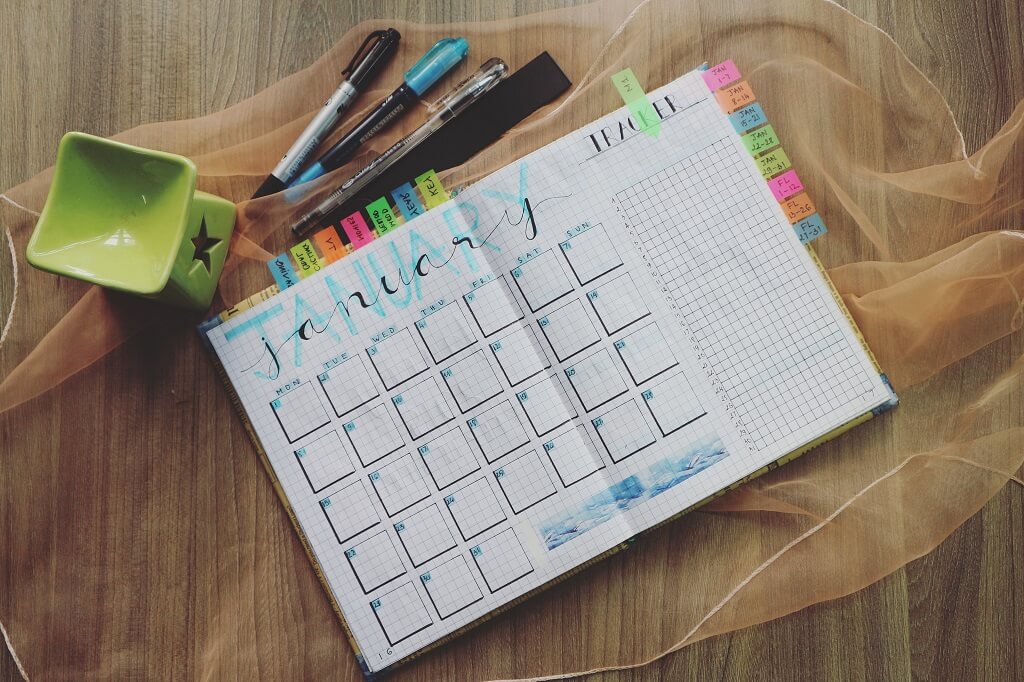Building exercise into your wellness routine is a healthy goal, but anyone who’s tried it knows it’s not always easy. Exercise is often the first thing to be cut when family, school, work, and social life obligations call for us. That’s why establishing an exercise routine that works with your lifestyle can ensure you give yourself the gift of movement as often as you’d like.
If the process doesn’t feel intuitive or easy at first, don’t worry. One study found that an activity takes around 65 days to become a habit. It also may take a while to find the right kind of exercise for you, and you may need to make adjustments at different points based on what’s happening in your life.
Ready to start prioritizing movement? Here’s how you can establish an exercise routine that works for you.
Establish exercise goals
First, decide why you want to exercise. There are many reasons why exercise is good for wellness, and deciding which ones matter to you is important.
Here are a few goals to consider when deciding why you want to exercise:
- Mental health and happiness
- Weight loss
- Weight maintenance
- Muscle gain
- Athletic performance
- Enjoyment
Your reason for exercising can help you decide what type of exercise is best for you. Yoga, running, weightlifting, high-intensity interval training (HIIT), Pilates, functional strength training, and other types of exercise all have different health benefits, and the results can vary from person to person.
Knowing your “why” can help you choose and assess your workout routine, leading to a greater likelihood of reaching your desired outcome. If you achieve what you set out to do, you’re more likely to stick with it.
Plan your workouts weekly

If you’re lucky enough to have a schedule that stays the same each week, you might be able to get away with a standard weekly exercise routine, too. For example, you might decide that every afternoon, you’ll go on a run after work.
If you tend to have more variability in your schedule — maybe you have carpool duty some days, or maybe your work schedule changes from day to day — it’s a good idea to check in once a week and plan ahead.
In the same way that many people plan their meals for the week, you might sit down on Sunday and plan your workouts for the coming week based on your calendar. If you have a planner, you can write down your exercise schedule or add it to the calendar on your phone or computer. If you’re attending workout classes, booking the entire week on a Sunday might be motivating.
Putting some intentionality behind your exercise schedule means you’re less likely to fall short of your goals. Maybe you move your afternoon run to the morning one day so that you can get dinner with a friend. That way, you don’t have to sacrifice one thing over another.
Assess your enjoyment
There are so many ways to make exercise enjoyable while still receiving the health benefits, so there’s no reason to suffer through a workout that doesn’t make you feel good or clashes with your lifestyle (especially if you’re paying money for it). Even if you’re seeing quick results, you might end up dropping your routine because it’s unenjoyable.
If you’re unsure what type of workout you’d like, many studios and gyms offer free trials and single-visit purchase options that make it easy to test the waters without a big commitment. You can also try services like ClassPass that allow you to visit a variety of gyms and studios each month without committing to a specific gym, studio, or type of exercise. With these memberships, you can try out many types of workouts, like aerial yoga or dance classes.
And before you begin spending, know that there are plenty of free ways to exercise, too. Running, walking, and bodyweight exercises are easy to do outside, and you can find all types of instructor-led exercise videos on Youtube. These are great ways to get a feel for a workout without committing.
Track your results

Achieving your goals can be hugely rewarding and motivate you to stick to your routine for the long haul. Tracking your enjoyment is one way to assess a workout’s effectiveness. And maybe that’s all you want from your exercise routine — the endorphins that accompany regular exercise.
But if you have other goals related to your weight, calorie burn, muscle mass, athletic skill or performance, or something else, it’s a good idea to check in on those goals every so often.
- Are you getting closer to what you want to achieve?
- If not, do you need to tweak your routine?
- Is there something else about your lifestyle that’s making it difficult to achieve your goals?
If you’re unsure why you’re not hitting your milestones, you might benefit from the help of a personal trainer. These professionally trained instructors can create action plans for you based on your list of wellness goals. You can book one-off sessions or see your trainer regularly as part of your exercise routine.
Don’t wait for motivation
You might not always feel motivated to work out, and that’s normal. But motivation is not necessary for you to stick to your routine. In fact, if you wait for motivation, you might show up once or twice and call it quits.
The magic happens with consistency; all that’s needed for consistency is discipline. It’s not as exciting as feeling super charged up, but getting up and moving — when you’re sore, you’ve had a bad day at work, you’re a little sleepy, or if it’s raining — is what builds the habit into your lifestyle.
Still, there are ways to build motivation for your exercise routine. Here are a few ideas:
- Invest in workout gear that makes you feel excited to get moving: a pair of tennis shoes, activewear, headphones, or a reusable water bottle.
- Find an accountability buddy. If your internal dialogue tends to tell you to stay put, planning to exercise with a friend can increase the odds that you don’t cancel. Plus, exercising with others is more fun and means time passes quicker for many people.
- Prepare your clothes and equipment beforehand so that you don’t have any hoops to jump through before you get going.
Finally, listen to your body. If you’re injured or would benefit more from rest, do what you need to do to recover. Maybe you switch from a strength training session to a brief walk, or perhaps you choose to get an extra hour of sleep. On other days, you might choose to rest, see friends, or spend time with family over a workout. That’s part of a healthy, balanced life. You shouldn’t see that as a failure, and you can always assess and reset for the next day or week.
Building a bulletproof exercise routine takes time
The easiest way to stick to a routine is to create one that’s as frictionless as possible. That means it needs to be as feasible and enjoyable as possible. It also helps to set goals and regularly check in on them. You might need to switch up your routine from time to time to accommodate other areas of your life, and that’s OK. Consistency is the best way to make your fitness routine a seamless part of your daily routine.





